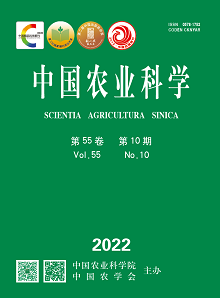【Objective】The objective of this article was to establish a low-N tolerance evaluation system for sweetpotato varieties, to screen low-N-tolerant genotypes and evaluate different N efficiency categories and to provide a theoretical basis for studying the low-N-tolerant physiological mechanism of sweetpotato varieties and mining N-efficient genes.【Method】Under the treatment of low N stress (0 mmol·L-1) and normal N application (14 mmol·L-1) of hydroponic experiment. Selected 126 sweetpotato varieties from different sweetpotato areas at home and abroad, we collected eleven indicators, including the shoot biomass, shoot biomass increase, root biomass increase, plant biomass increase ratio, root-to-shoot ratio, vine length, root length, leaf number, CCI, nitrogen accumulation, nitrogen physiological utilization efficiency, and calculated the low-N tolerance index of all indicators. The study carried out principal component analysis by using the comprehensive membership function method, regression analysis and cluster analysis to comprehensively evaluate the low-N-tolerant sweetpotato varieties and N efficiency types.【Result】1) Under low N level, the average of the shoot biomass, shoot biomass increase, root biomass increase, plant biomass increase ratio, vine length, root length, leaf number, CCI, and N accumulation of 126 tested sweetpotato varieties was lower than that under normal N level, while the average of root-to-shoot ratio and nitrogen physiological utilization efficiency were higher than that under normal N level; 2) The variation coefficient of shoot biomass, shoot biomass increase, root biomass increase, plant biomass increase ratio, root-to-shoot ratio, vine length, root length, leaf number, nitrogen accumulation, nitrogen physiological utilization efficiency at low-N stress was higher than that at normal N level, and the amplification of them were ranked as shoot biomass increase>plant biomass increase ratio>root biomass increase>leaf number>shoot biomass>nitrogen physiological utilization efficiency>nitrogen accumulation>root length> root-to-shoot ratio>Vine length; 3) The principal component analysis was carried out on the low-N-tolerant index of eleven indicators, extracted three principal components, the cumulative variance contribution rate of which was 72.67%, and calculated the comprehensive evaluation Y-value; 4) The correlation between the low-N-tolerant index of shoot biomass, shoot biomass increase, root biomass increase, plant biomass increase ratio, leaf number, vine length, root length, root-to-shoot ratio, nitrogen accumulation, nitrogen physiological utilization efficiency and the Y-value were highly significant(P<0.01), among them, the correlation of shoot biomass increase, root biomass increase, plant biomass increase ratio, nitrogen accumulation and shoot biomass was higher, with the correlation coefficients of 0.85, 0.86, 0.81, 0.79 and 0.73, respectively; 5) The regression equation of the Y-value screened eight indicators to evaluate low-N tolerance of sweetpotato varieties, and the cluster analysis on eight indicators showed that the sweetpotato genotypes were classified into three types, low-N-tolerant, intermediate, and low-N-sensitive. The agronomic traits and N efficiency traits of three sweetpotato categories were analyzed by variance analysis.【Conclusion】Shoot biomass, shoot biomass increase, root biomass increase, root length, vine length, leaf number, nitrogen accumulation and nitrogen physiological utilization efficiency were selected as the low-N tolerance evaluation indicators of sweetpotato; The study screened 7 low-N-tolerant sweetpotato varieties: 13104-2/Zishu1, Yibinhongxinshu, Zhezishu 2, Yuzi 3, Yuzi 6, Luozi 1 and Yuzixiang 10; The results of variance analysis showed that the low-N-tolerant varieties performed better than the intermediate and the low-N sensitive varieties, and there are significant difference in five traits: shoot biomass, shoot biomass increase, root biomass increase, vine length and nitrogen accumulation.









